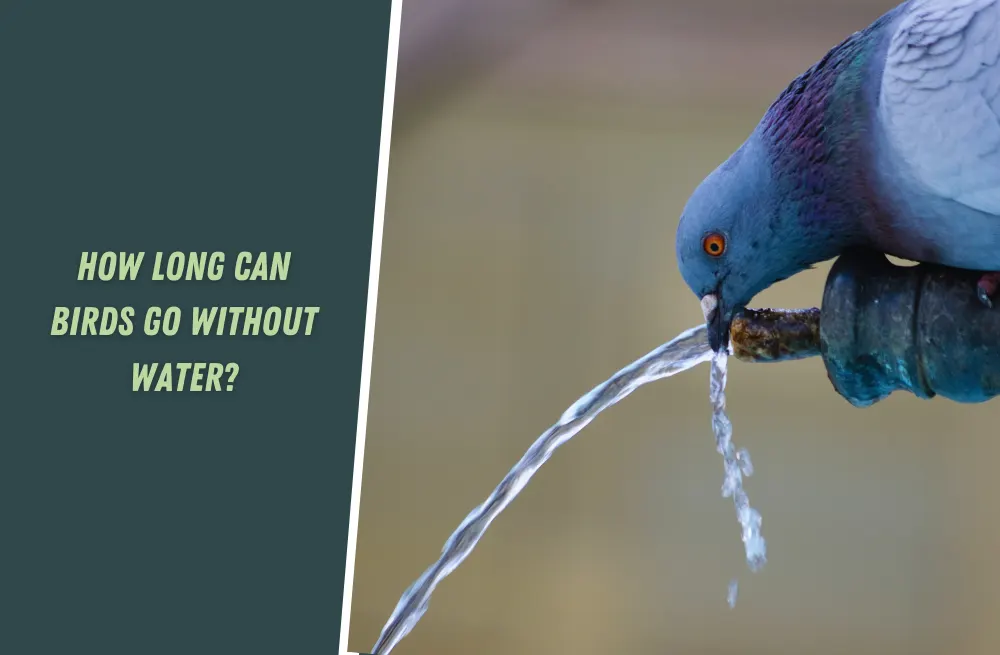Cougars, also known as mountain lions, are large and elusive wild cats that are found in North and South America.
They are solitary animals and are known for their incredible strength and agility, making them one of the most impressive predators in the animal kingdom.
Cougars have captured the imagination of people for centuries and have been featured in various cultural representations, including films, literature, and music.
In addition, they are a popular topic in wildlife documentaries and are often a highlight for outdoor enthusiasts who want to catch a glimpse of these elusive creatures.
Here, we will explore some interesting facts about cougars that you may not know. From their hunting techniques to their habitats, we’ll take a closer look at these fascinating animals and learn more about what makes them so unique.
To start off, let’s take a look at some basic information about cougars:
| Name | Cougar, Mountain Lion |
|---|---|
| Scientific name | Puma concolor |
| Size | 6-9 feet long, 2-3 feet tall at the shoulder |
| Weight | 80-220 pounds |
| Lifespan | 8-13 years in the wild, up to 20 years in captivity |
| Habitat | Mountains, forests, deserts, and swamps |
| Diet | Deer, elk, rabbits, rodents, and sometimes livestock |
| Conservation status | Least Concern (stable population) |
Now that we have a basic understanding of cougars, let’s dive into some interesting facts about them.
Physical Characteristics
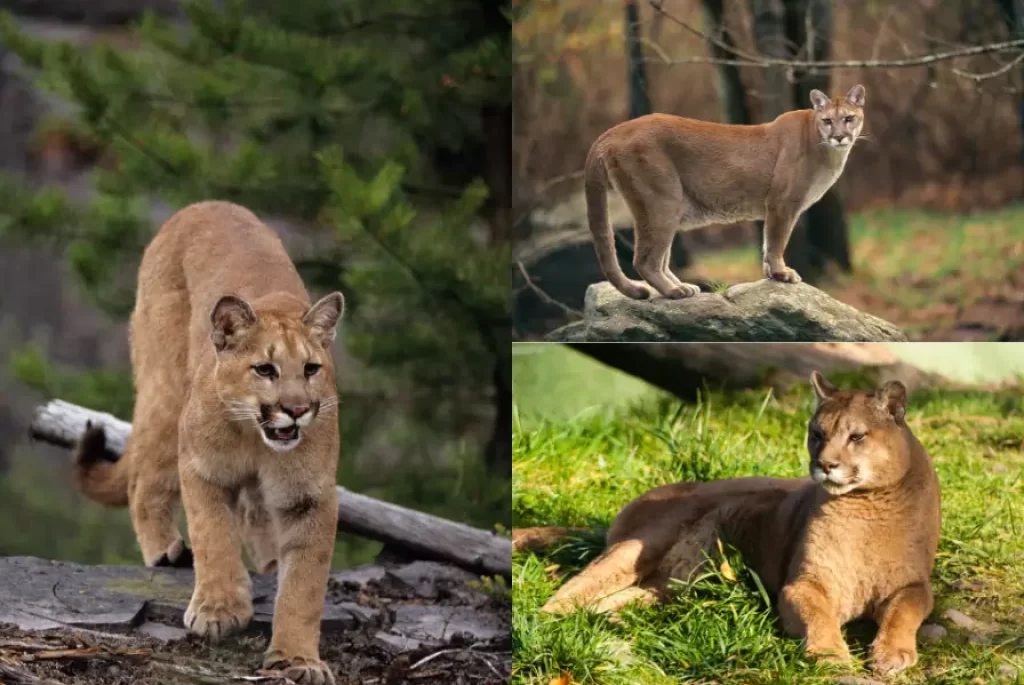
Cougars are large and muscular wild cats that have a distinctive appearance. They are usually tan or grayish in color, with short fur that covers their entire body.
Cougars have a long, slender body and powerful legs that are built for running and jumping.
They are known for their long tail, which can measure up to 3 feet in length and is used for balance and communication.
Adult male cougars can weigh up to 200 pounds and measure up to 8 feet in length, while females are generally smaller, weighing around 100 to 130 pounds and measuring up to 7 feet long.
Cougars have a keen sense of hearing and vision, which helps them to locate prey and navigate through their environment.
Cougars use their physical traits for various activities, such as hunting, climbing, running, and jumping. They are agile climbers and can easily scale trees to avoid predators or to ambush their prey.
Cougars are also excellent runners, with the ability to reach speeds of up to 50 miles per hour. Their strong legs and flexible spine allow them to jump up to 18 feet in distance and 6 feet in height, making them formidable hunters.
Habitat and Distribution of the Cougar
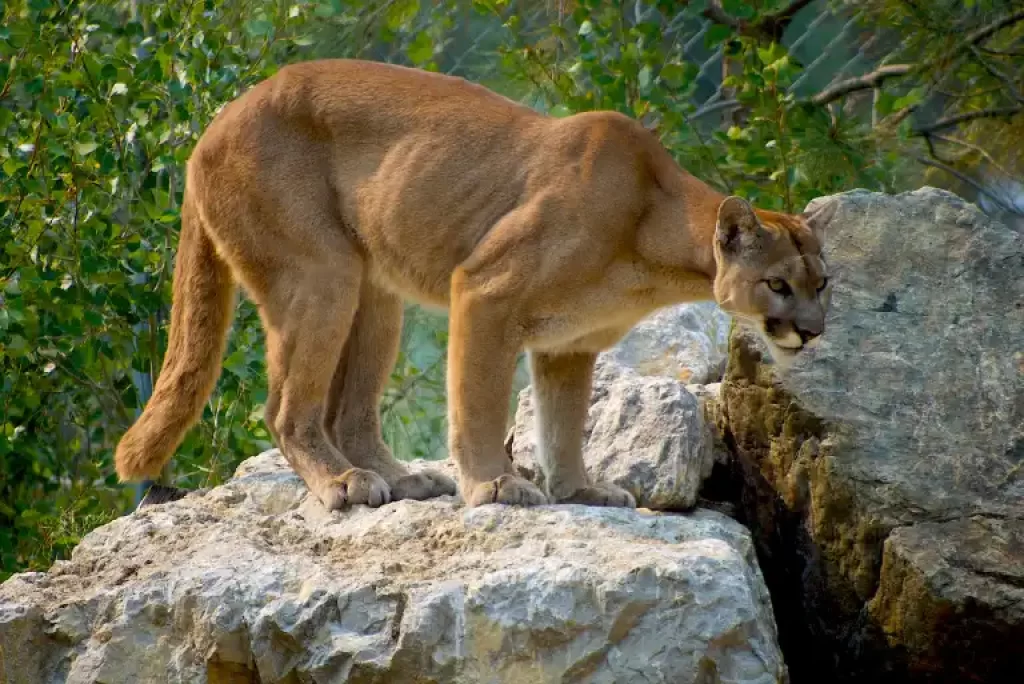
Cougars are found throughout North and South America, from Canada to Argentina. They are adaptable animals that can thrive in various habitats, including forests, deserts, and mountains. However, they prefer areas with abundant prey, cover, and water sources.
In North America, cougars historically roamed from coast to coast, but their populations have declined due to human encroachment and persecution. Currently, the largest populations of cougars are in the western United States, including California, Colorado, and Montana.
In South America, cougars are widespread in countries such as Brazil, Chile, and Peru, where they inhabit diverse landscapes, such as rainforests, savannas, and high-altitude plateaus.
Due to their large home ranges, cougars need ample space to hunt, mate, and raise their young. They typically require territories of 50 to 500 square miles, depending on the availability of prey and habitat quality. This makes habitat conservation crucial for the survival of cougar populations.
Unfortunately, cougars face many threats to their habitat and survival. Habitat loss and fragmentation due to urbanization, agriculture, and resource extraction reduce the amount and quality of suitable habitat for cougars.
This can lead to conflicts with humans, such as encounters in urban areas or attacks on livestock.
Furthermore, cougars are often hunted or poached by humans for their fur, body parts, or as perceived threats to human safety. Legal hunting and trapping of cougars occur in some states and provinces, which can have negative impacts on the genetic diversity and social dynamics of cougar populations.
Behavior and Ecology
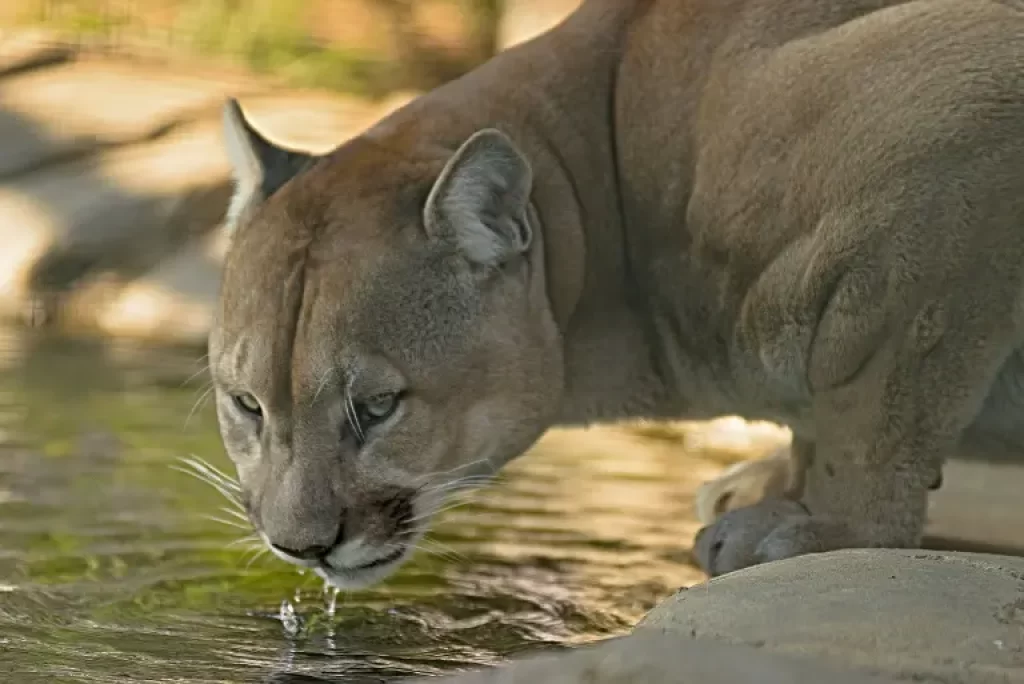
Cougars are known for being solitary and territorial animals that tend to avoid human contact. They usually hunt and live alone, except during mating or cub-rearing periods, when they may form temporary pairs or groups.
Cougars are carnivores that primarily prey on deer, elk, and other ungulates, but they can also eat small mammals, birds, and sometimes livestock or pets. Their hunting strategy involves stalking and ambushing their prey, often from a concealed location, and delivering a bite to the neck or throat to kill it quickly.
Cougars play an important ecological role as apex predators in the food chain, regulating the populations of their prey and maintaining the balance of the ecosystem. However, they also face competition from other predators, such as wolves, bears, and coyotes, which can affect their hunting success and habitat use.
Cougars can also have negative interactions with humans, especially in areas where their range overlaps with urban or agricultural land. Human-wildlife conflicts can result in the killing or relocation of cougars, as well as increased risks for both humans and cougars.
Interesting Facts about Cougars
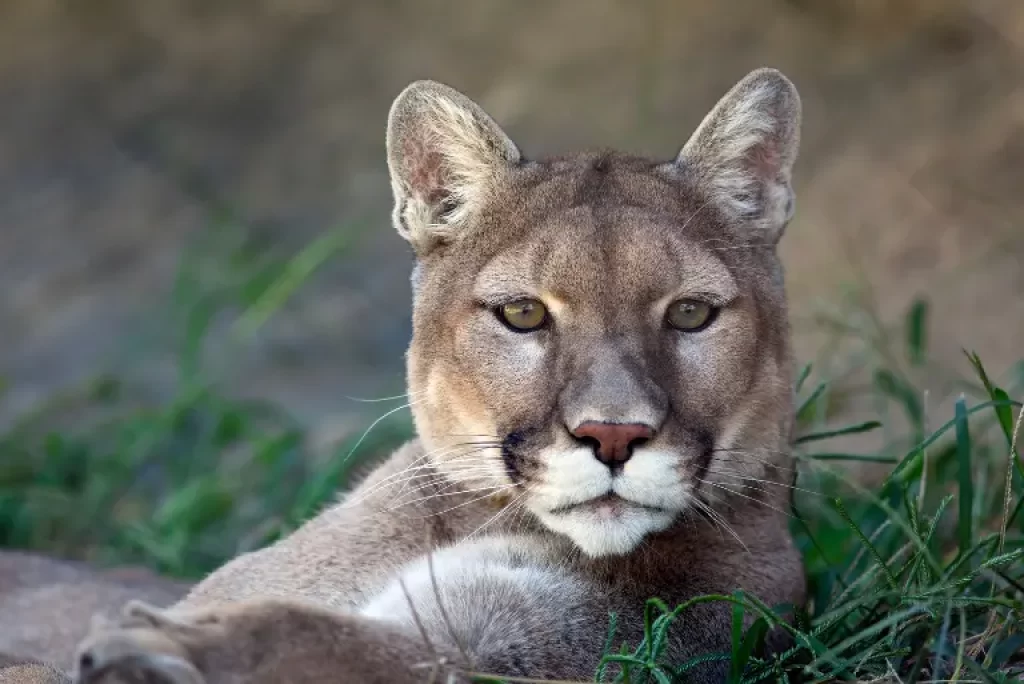
Cougars are the fourth largest cat species in the world
They are the fourth largest cat species in the world, trailing only the tigers, lions, and jaguars in terms of size.
Adult male cougars can weigh up to 200 pounds and measure up to 8 feet long from nose to tail, while females are typically smaller, weighing around 120 pounds on average.
Despite their large size, cougars are often elusive and solitary, making them difficult to spot in the wild. Their muscular build, long tail, and distinctive facial features, however, make them easily recognizable among other big cats.
The scientific name for cougars is Puma concolor
The scientific name for cougars, Puma concolor, refers to their distinct coat coloration. Unlike other big cats such as leopards or jaguars, cougars have a uniform coat color, ranging from tan to grayish-brown. This “one color” coat helps them blend into their surroundings and remain camouflaged while hunting or avoiding predators.
The scientific name Puma concolor is widely used to refer to this species, though they are also known by other names such as mountain lions, pumas, and catamounts.
Cougars have the largest hind legs proportional to their body size among wild cats
The physical abilities of cougars are impressive and unique among wild cats. Their hind legs are proportionally longer than other wild cats, which allows them to jump remarkable distances of up to 18 feet in a single leap.
This makes them excellent hunters and helps them navigate through their mountainous habitats. Cougars are also able to swim, although they tend to avoid water unless necessary.
Their physical adaptations allow them to be incredibly efficient predators and have helped them survive and thrive in a variety of environments.
Cougars are found in 28 countries, from the Yukon in Canada to Tierra del Fuego in Argentina.
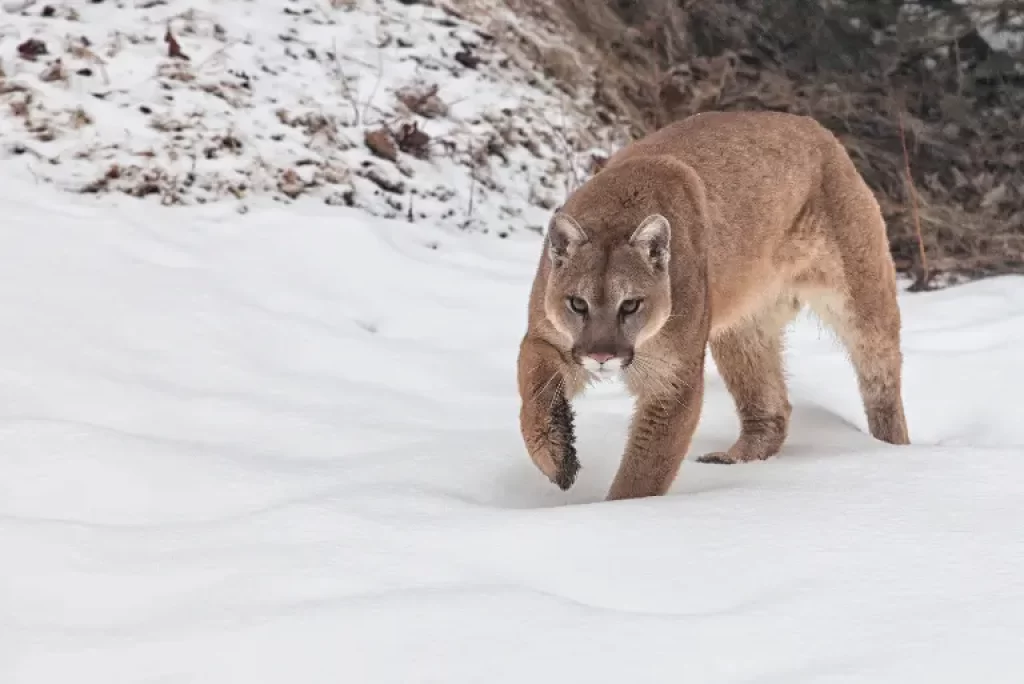
Cougars have a wide range of habitat, which is why they are found in such a vast geographic area. They are known to inhabit forests, deserts, grasslands, and even swamps.
They are adaptable to a wide range of temperatures, from the harsh cold of Canada to the heat of the deserts in the southwestern United States.
Cougars have an impressive ability to navigate through different terrains, such as rocky cliffs and steep slopes, with ease.
Cougars have the largest range of any land mammal in the Western Hemisphere
Cougars are known for their impressive range, which is the largest of any land mammal in the Western Hemisphere. Some cougars have been documented traveling up to 300 miles, which is an astounding distance for a terrestrial animal.
This wide range allows cougars to explore different habitats, search for prey, and avoid competition with other cougars.
Cougars require large territories to maintain their populations, as they need diverse prey sources and adequate cover to avoid detection by humans or other predators. However, habitat fragmentation and human activities have reduced the available habitat for cougars, making their range more limited and fragmented.
The Florida panther is a subspecies of cougar
The Florida panther, also known as the Eastern cougar, is a subspecies of cougar that is only found in southern Florida. It is one of the most endangered mammals in the United States, with only an estimated 120 individuals left in the wild.
The main threat to the Florida panther’s survival is habitat loss and fragmentation, as human development and agriculture have reduced the cat’s range and access to prey. In addition, the population is at risk of genetic problems due to inbreeding, as the small size of the remaining group limits genetic diversity.
Conservation efforts for the Florida panther include habitat restoration, creation of wildlife corridors, and captive breeding programs to increase the genetic diversity of the population.
Cougars are solitary animals, except during mating and cub-rearing periods
Cougars are known for their solitary nature and their preference for living and hunting alone. However, during the mating season, male cougars may seek out female companionship and form temporary pairs to mate.
Female cougars are solely responsible for raising their cubs, which they protect fiercely from predators and other threats.
Once the cubs reach maturity, usually after about two years, they leave their mother’s territory and begin their own solitary lives. The solitary behavior of cougars allows them to hunt and move more efficiently in their territory, as well as reduce the risk of competition for food or territory with other cougars.
Cougars can run up to 50 miles per hour and jump up to 18 feet in a single bound
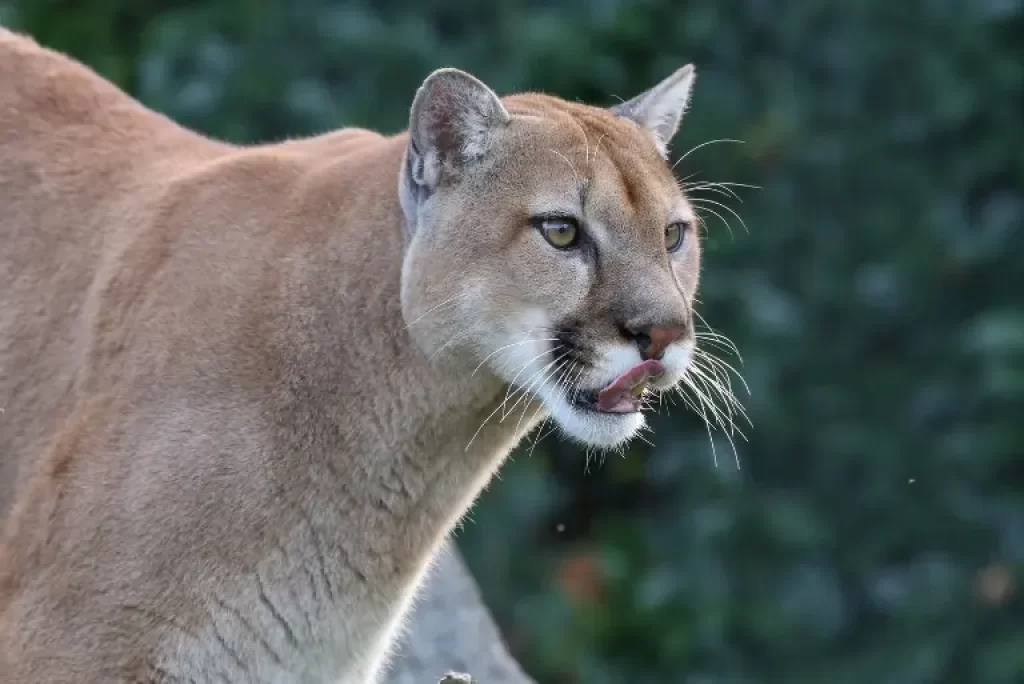
Cougars are known for their impressive athleticism, and their running and jumping abilities are no exception.
These big cats can run up to 50 miles per hour, making them one of the fastest land mammals in the world. Additionally, their powerful hind legs allow them to jump up to 18 feet in a single bound.
This agility and speed make them formidable predators, capable of taking down prey much larger than themselves.
Cougars are known to use their speed and stealth to ambush their prey, often going for a bite to the neck or throat to quickly incapacitate them.
These hunting skills are essential for their survival in the wild, as they need to capture enough food to sustain themselves in their often-sparse habitats.
Cougars communicate with each other through vocalizations such as hisses, growls, and screams
Cougars have a wide range of vocalizations they use to communicate with each other. They can hiss, growl, purr, chirp, and even scream, depending on the situation.
These vocalizations are used for various reasons, including attracting mates, marking territory, and warning other animals of their presence.
For instance, cougars may use a low growl to warn other animals to stay away from their kill or territory. Similarly, they may use a high-pitched scream to attract a mate during breeding season.
Cougar cubs are born with spots on their fur, which fade as they grow older
Cougars give birth to litters of one to six cubs, with an average of two to three. The cubs are born with their eyes closed and weigh less than a pound.
One unique feature of cougar cubs is that they are born with spots on their fur, which help camouflage them in their environment.
As the cubs grow older, the spots fade and their fur turns into the characteristic tan or grayish color of adult cougars. The mother cougar takes care of the cubs for up to two years, teaching them hunting skills and how to survive on their own.
Cougars have a lifespan of up to 12-15 years in the wild, and up to 20 years in captivity
Cougars have a relatively long lifespan compared to many other wild cats. In the wild, cougars can live up to 12-15 years, while those in captivity can live up to 20 years or more.
The exact lifespan of cougars can vary based on various factors such as genetics, availability of prey, and environmental conditions. As apex predators, cougars play a crucial role in maintaining the balance of their ecosystem.
However, their lifespan can be impacted by threats such as habitat loss, fragmentation, hunting, and human-wildlife conflicts.
By protecting their habitat and ensuring healthy prey populations, we can help increase the lifespan and sustainability of cougar populations.






